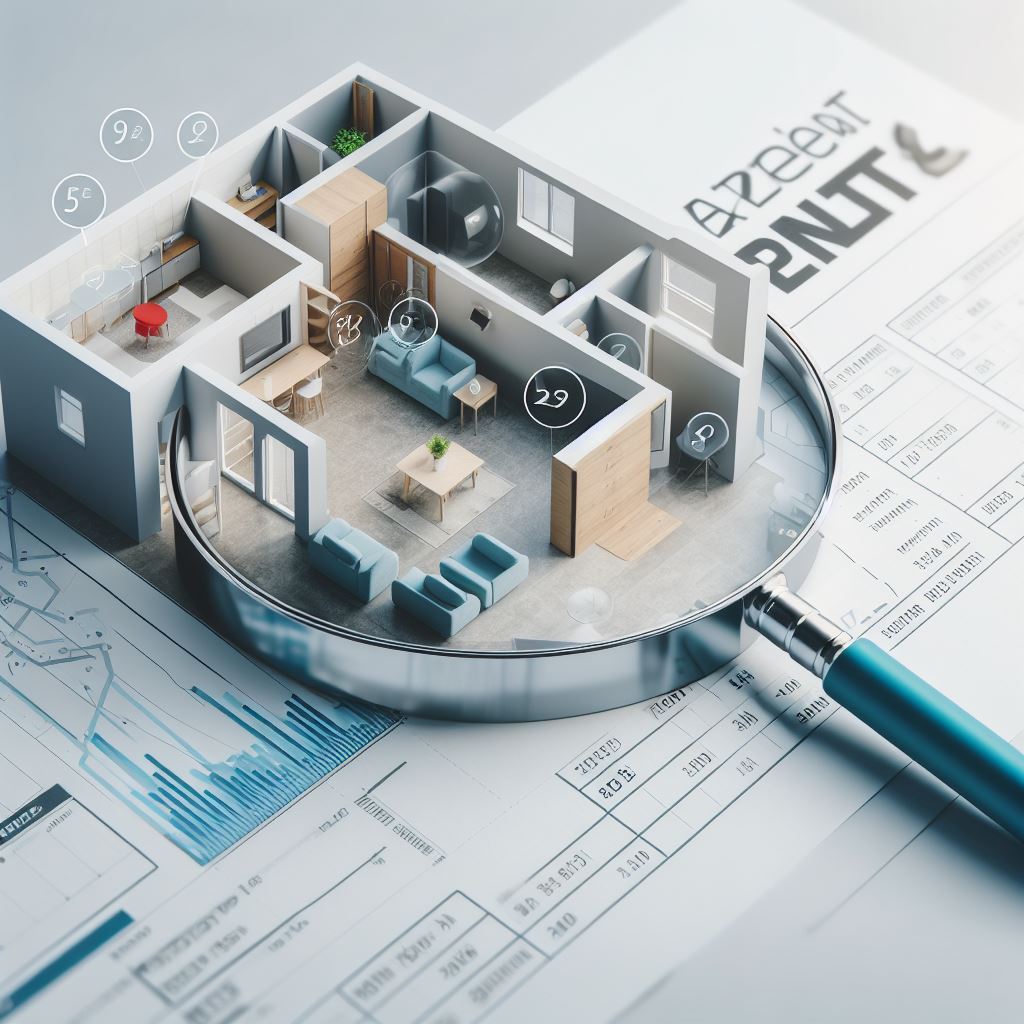Unveiling Secrets: Calculating Apt Apartment Rental Prices

Are you tired of feeling like you’re in the dark when it comes to calculating apartment rental prices?
Unveiling Secrets: Calculating Apartment Rental Prices is here to shed some light on the process. With this informative article, you’ll gain a deeper understanding of the market trends, location dynamics, property amenities, and additional costs that can impact rental prices.
Get ready to take control of your apartment search and make informed decisions.
Key Takeaways
- Location is a significant factor in determining rental prices, with prime locations commanding higher prices.
- The size, layout, and desirable features of an apartment also contribute to higher rental prices.
- Rental prices are influenced by demand in the area and economic factors such as growth or downturns.
- Proximity to amenities, safety and crime rates, neighborhood condition, and availability of amenities also impact rental prices.
Understanding Market Trends and Factors
To accurately calculate apartment rental prices, you must understand the various market trends and factors that influence them. By analyzing these trends and factors, you can gain valuable insights into the rental market and make informed decisions about pricing your apartment.
One important factor to consider is the location of the apartment. Apartments in prime locations, such as city centers or near popular amenities, tend to command higher rental prices. On the other hand, apartments in less desirable areas may have lower rental prices.
Another factor to consider is the size and layout of the apartment. Larger apartments with more bedrooms and bathrooms are generally more expensive to rent. Similarly, apartments with desirable features such as balconies or in-unit laundry facilities may have higher rental prices.
The overall demand for rental properties in a particular area is also a crucial factor. If there’s high demand for apartments in a specific neighborhood or city, rental prices are likely to be higher. Conversely, if the demand is low, rental prices may be more affordable.
Furthermore, economic factors such as inflation and interest rates can also influence rental prices. In times of economic growth, rental prices tend to increase as people have more disposable income. Conversely, during economic downturns, rental prices may decrease.
Analyzing Location and Neighborhood Dynamics
Now let’s delve into analyzing the location and neighborhood dynamics to further understand how they impact apartment rental prices.
When it comes to determining the value of an apartment, location plays a crucial role. The proximity to schools, shopping centers, parks, and public transportation can greatly influence the desirability and convenience of a neighborhood, ultimately affecting rental prices.
Additionally, the safety and crime rates of an area are important factors to consider. Neighborhoods with lower crime rates tend to be more desirable, leading to higher rental prices.
Furthermore, the overall condition and cleanliness of the neighborhood can also impact rental prices. Well-maintained neighborhoods with attractive landscapes and amenities tend to command higher prices compared to areas that are neglected or poorly maintained.
Finally, the availability of amenities such as gyms, swimming pools, and parking spaces within the neighborhood can also contribute to the rental price.
By analyzing these location and neighborhood dynamics, you can gain a better understanding of why certain apartments may be priced higher or lower than others.
Now, let’s move on to evaluating property amenities and features to complete our analysis of apartment rental prices.
Evaluating Property Amenities and Features
Consider the amenities and features of the property when evaluating apartment rental prices. The quality and abundance of amenities can greatly influence the value of a rental property. Here are some key factors to take into account:
- Interior Features: Look for properties that offer desirable interior features such as hardwood floors, modern appliances, ample closet space, and updated bathrooms. These features not only enhance the overall living experience but also contribute to the property’s value.
- Community Amenities: The amenities offered within the apartment complex can significantly impact the rental price. Evaluate amenities like a fitness center, swimming pool, on-site laundry facilities, parking availability, and 24-hour security. These community features can greatly enhance the convenience and comfort of residents, justifying a higher rental cost.
When assessing the rental price of an apartment, it’s crucial to consider the amenities and features provided. Properties with desirable interior features and a range of community amenities tend to command higher rental prices. However, it’s important to balance these amenities with your budget and personal needs.
Now that we’ve explored the impact of property amenities, let’s dive into the next section, which focuses on factoring in size and layout considerations.
Factoring in Size and Layout Considerations
Evaluate the size and layout of an apartment to determine how they impact the rental price. When considering the size of an apartment, landlords often use square footage as a key factor in determining the rental price. Larger apartments typically command higher rents due to the increased living space they offer. However, it’s important to remember that size isn’t the only consideration.
The layout of an apartment also plays a significant role in determining its rental price. Apartments with efficient and functional layouts, such as open-concept kitchens and well-proportioned bedrooms, are often more desirable and can command higher rents. On the other hand, apartments with awkward or inefficient layouts may be priced lower to compensate for the inconvenience they may cause.
Additionally, factors such as the number of bedrooms and bathrooms, the presence of storage spaces, and the overall flow of the apartment can also influence the rental price. By evaluating the size and layout of an apartment, you can gain a better understanding of how these factors impact the rental price and make a more informed decision.
Now, let’s move on to the next section and discuss the importance of considering additional costs and negotiations in determining the final rental price.
Considering Additional Costs and Negotiations
As you continue examining the size and layout of an apartment, it’s crucial to consider additional costs and engage in negotiations to determine the final rental price. While the base rent may seem affordable, it’s essential to factor in other expenses that could significantly impact your monthly budget.
Here are some additional costs to keep in mind:
- Utilities: Find out if the rent includes utilities such as water, electricity, and gas. If not, consider the average costs for these services in the area and factor them into your budget.
- Parking: If you own a car, inquire about parking arrangements. Some apartments offer free parking, while others may charge an additional fee for a designated spot. Be sure to understand the cost and availability of parking options.
When it comes to negotiations, don’t be afraid to discuss the rental price with the landlord or property manager. Here are a few tips to help you navigate the negotiation process:
- Research comparable rentals: Before entering into negotiations, gather information about similar apartments in the area. Knowing the market rates will give you leverage and help you make a compelling case for a lower rent.
- Highlight your strengths as a tenant: If you have a stable income, good credit score, or excellent rental history, make sure to emphasize these qualities. Landlords may be more inclined to negotiate if they see you as a reliable and responsible tenant.
Frequently Asked Questions
Are There Any Safety Concerns or Crime Rates to Consider in the Neighborhood?
You should consider safety concerns and crime rates in the neighborhood. Research local crime statistics, talk to residents, and check online resources. This information can help you make an informed decision about renting an apartment in the area.
What Are the Local Schools and Their Ratings in the Area?
Local schools and their ratings in the area are crucial to consider when searching for an apartment. Take into account factors like academic performance, extracurricular activities, and student-to-teacher ratios to make an informed decision.
How Accessible Is Public Transportation From the Apartment?
Public transportation from the apartment is easily accessible. Bus stops and train stations are conveniently located within walking distance. This makes commuting to work or exploring the city hassle-free and convenient for you.
Are There Any Nearby Parks, Recreational Facilities, or Entertainment Options?
Are there any nearby parks, recreational facilities, or entertainment options? Yes, there are several parks and recreational facilities within walking distance, as well as a variety of entertainment options such as theaters and live music venues.
What Is the Average Commute Time to Major Employment Centers From the Apartment Location?
The average commute time to major employment centers from the apartment location is an important factor to consider. It helps determine the convenience and accessibility of the area for your daily work routine.



